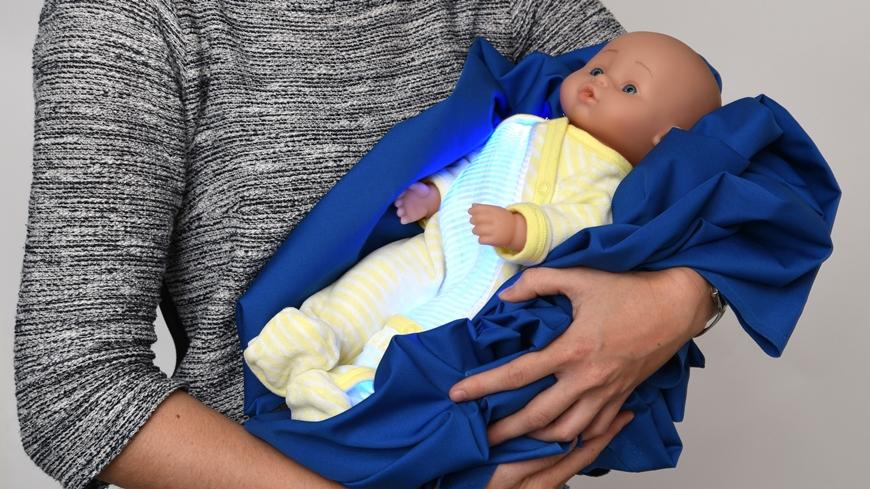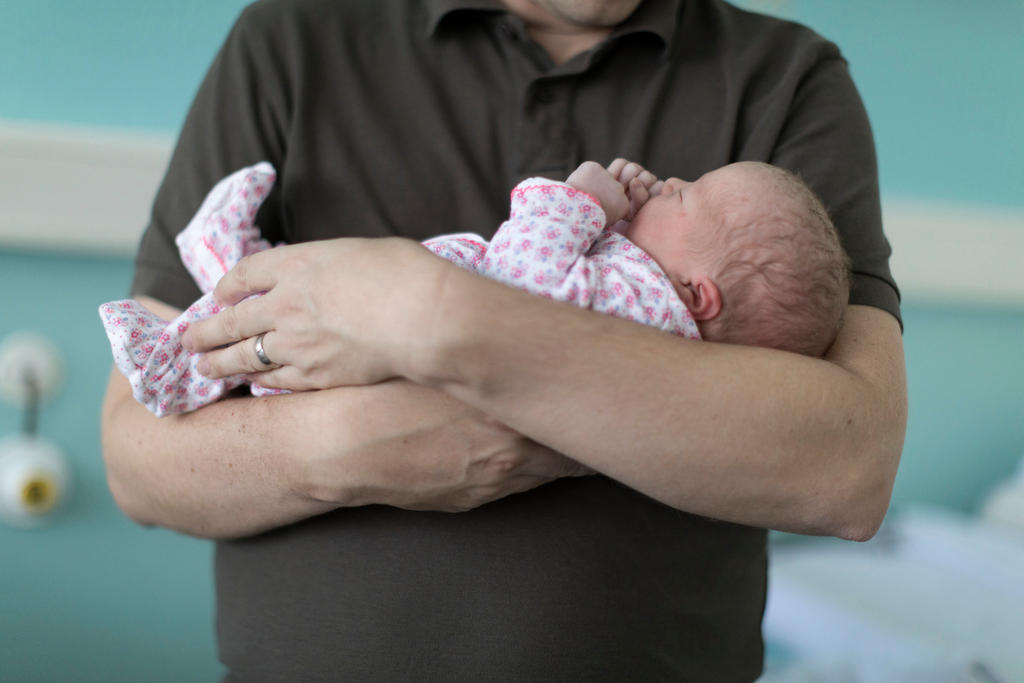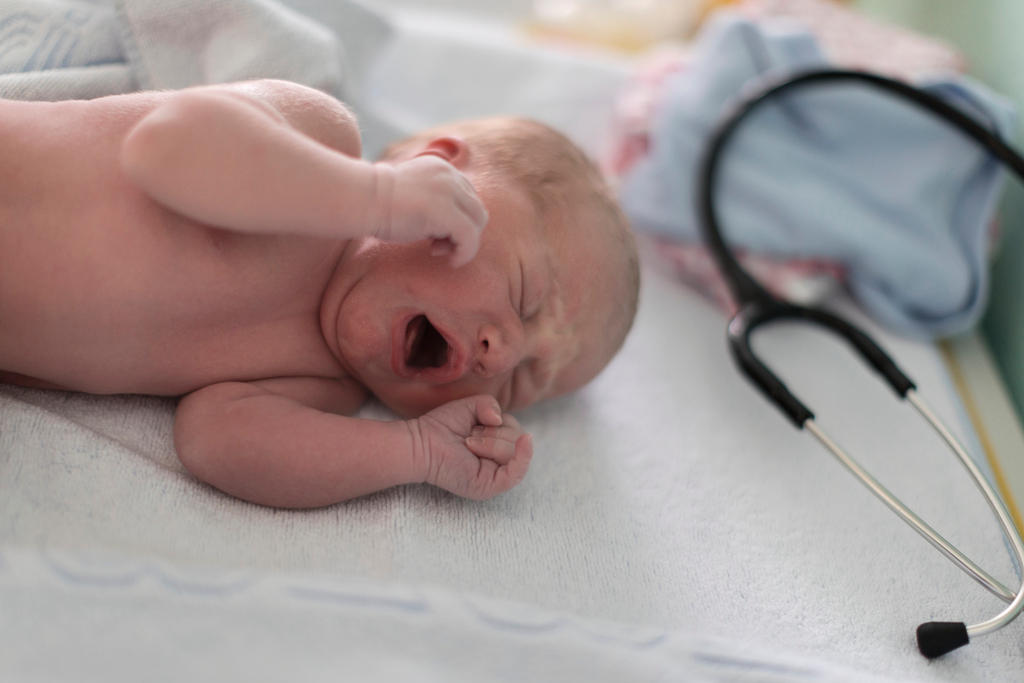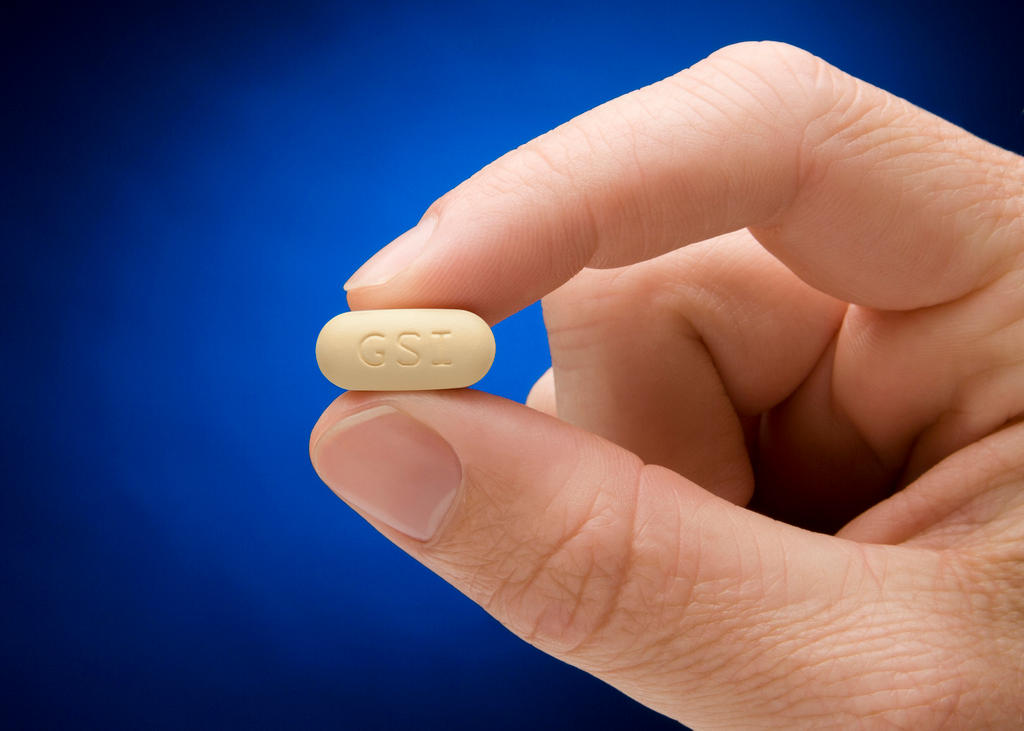Luminous clothes could heal jaundiced infants

Until now, the treatment for infant jaundice has been light therapy in an isolated incubator, but an innovative fabric developed by Swiss materials scientists could allow affected babies to heal while wrapped in their mothers’ arms.
The specially designed textile consists of conventional threads interwoven with similarly sized optical fibres that conduct blue light. It was developed by researchers at the Swiss Federal Institute of Materials Science and Technology (EMPA).
The blue light is key, because the frequency of these waves helps break down toxic by-products of haemoglobin in the blood called bilirubin, which can accumulate in very young infants and cause yellowed skin, or jaundice.
The standard treatment for jaundice, which is common in new-born babies, involves protecting their eyes and exposing their bare skin to the blue rays. But the EMPA innovation is a much more comfortable treatment as it uses satin fabric interwoven with the conductive fibres, which are powered by battery-operated LEDs.
The fabric can easily be turned into a blanket or outfit for a small infant, allowing them to receive treatment without the isolation of an incubator. In addition, because the fabric can be produced to only shine its light on the inside, it removes the risk of exposing infants’ sensitive eyes.
“The photonic textiles are washable and tolerated well by the skin. The satin fabric is smooth and matches the wearing comfort of a typical baby onesie,” explained lead author Maike Quandt in an EMPA statement on Monday.
The researchers hope to develop a version of the textile that is suitable for commercial production, which will involve giving it a slightly greater light intensity to make it optimally effective at breaking down the bilirubin.
Neonatal jaundice occurs when a baby’s young metabolism has trouble getting up to speed and fails to eliminate bilirubin. In severe cases, build-up of the compound can require a blood transfusion to avoid brain damage.
The research has been published in the trade journal Biomedical Optics ExpressExternal link.

In compliance with the JTI standards
More: SWI swissinfo.ch certified by the Journalism Trust Initiative



You can find an overview of ongoing debates with our journalists here. Please join us!
If you want to start a conversation about a topic raised in this article or want to report factual errors, email us at english@swissinfo.ch.